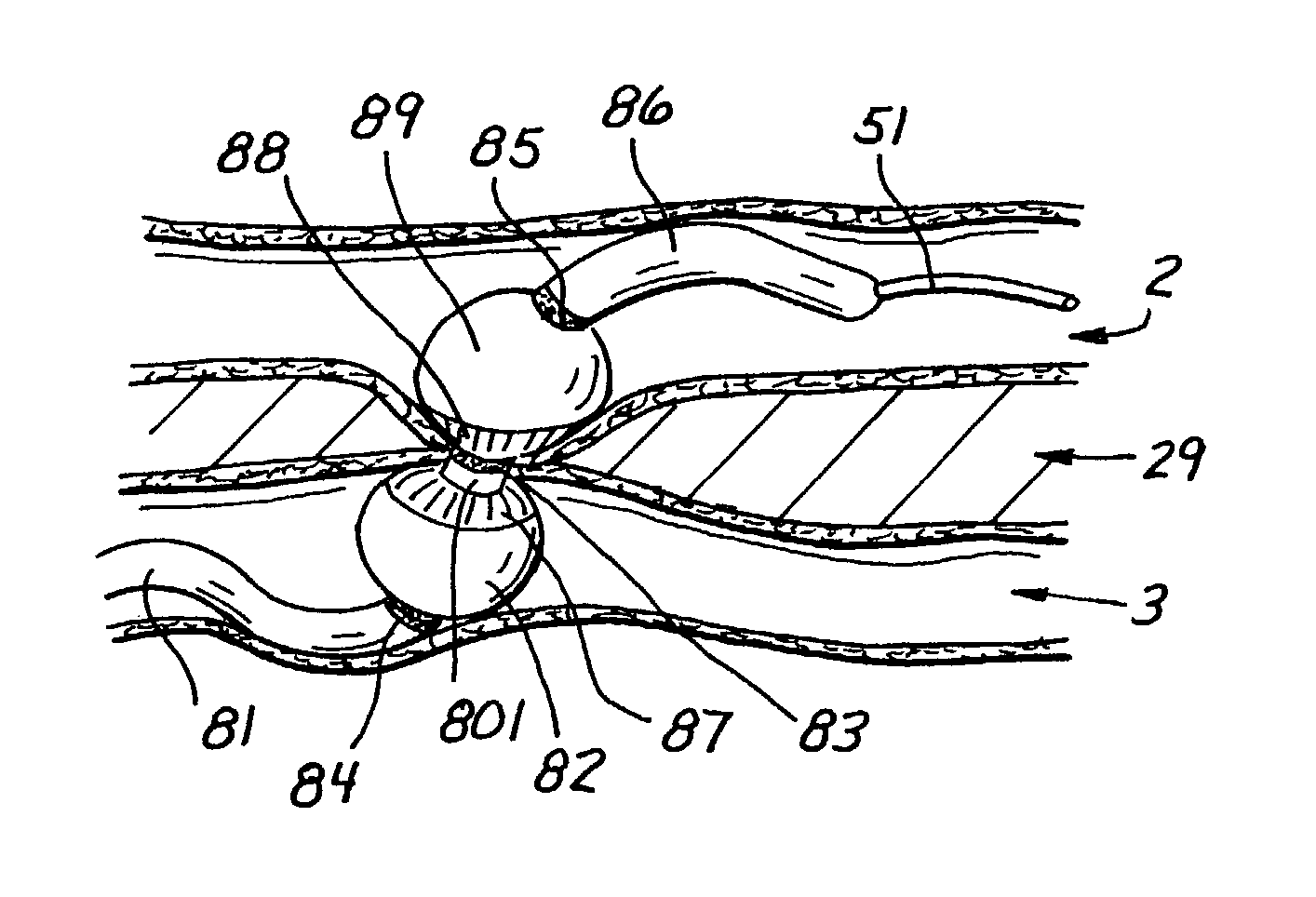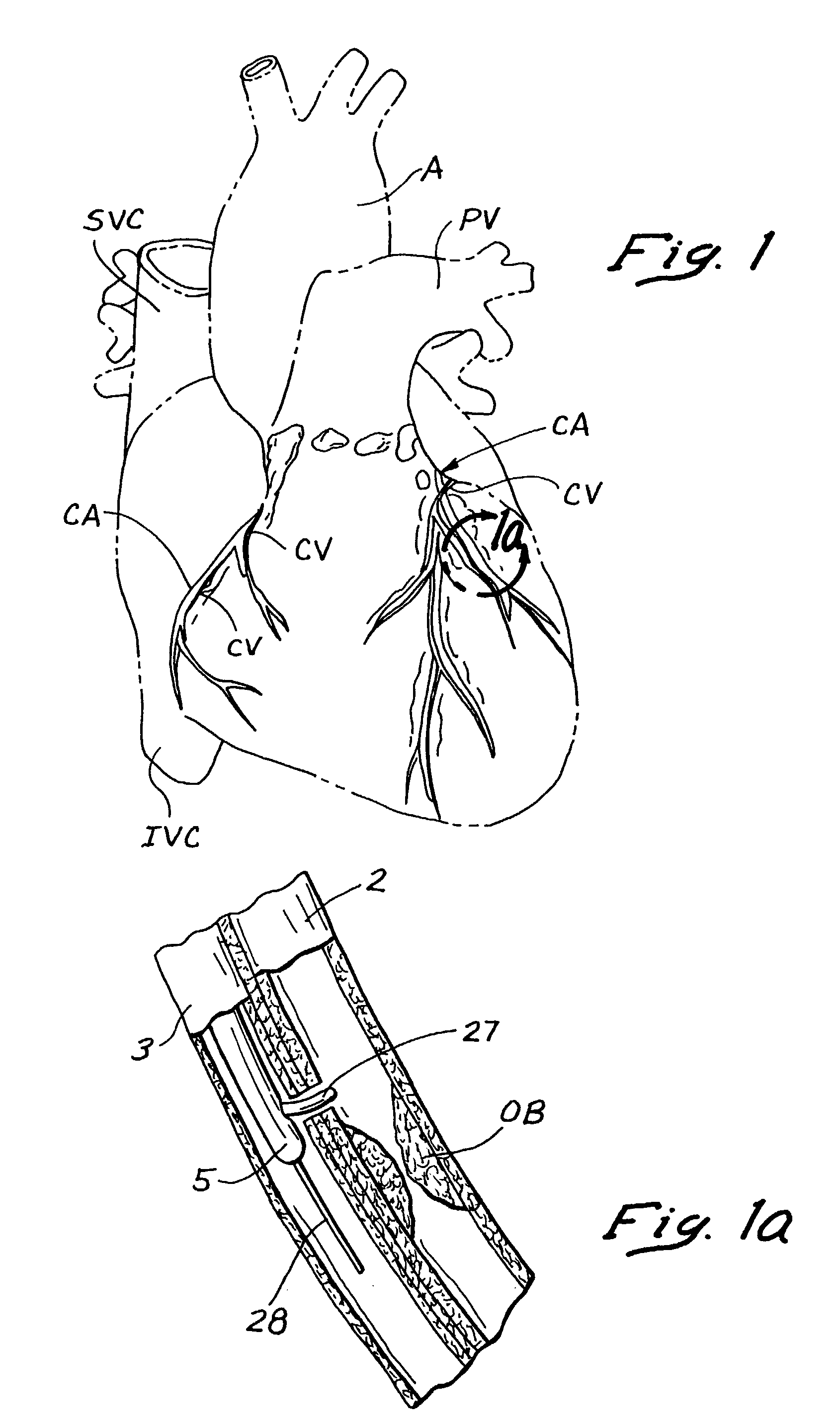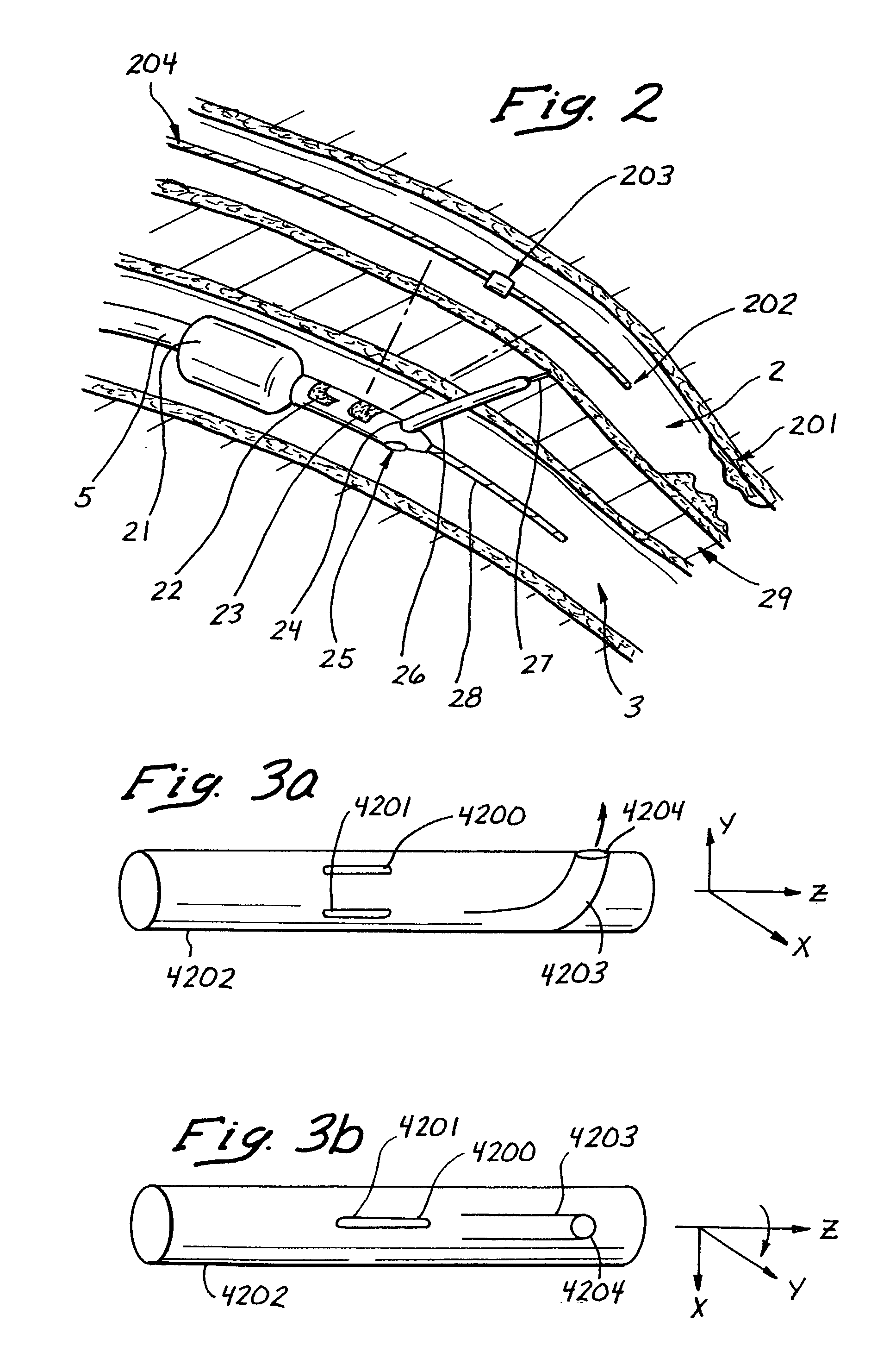Device, system and method for interstitial transvascular intervention
a technology of interstitial transvascular intervention and device, applied in the direction of surgical staples, prostheses, catheters, etc., can solve the problems of pain, disfunction and even death, procedure requires extensive surgery, and procedures are very difficult to perform, so as to enhance the perfusion of that region and enhance the oxygenation and profusion of that region.
- Summary
- Abstract
- Description
- Claims
- Application Information
AI Technical Summary
Benefits of technology
Problems solved by technology
Method used
Image
Examples
Embodiment Construction
[0068]The invention herein utilizes the vascular system as a perfect conduit to any region of the body. The devices, system s and methods described herein provide a new way that the interstitial space can be accessed for surgical purposes. The invention described herein provides a system for gaining percutaneous access to any part of the body through the vascular system, and provides the basic set of instrumentation for accomplishing several surgical and medical end points.
[0069]The present invention provides a percutaneous means for revascularizing an organ fed by a diseased vessel. In accordance with further embodiments of the present invention, a complete multiple coronary artery bypass may be accomplished without cracking open the chest, general anesthesia or cardiopulmonary bypass.
[0070]In order to provide an overall understanding of the present invention, the method of the invention will be discussed with reference to the device's use to bypass a lesion within the coronary art...
PUM
 Login to View More
Login to View More Abstract
Description
Claims
Application Information
 Login to View More
Login to View More - R&D
- Intellectual Property
- Life Sciences
- Materials
- Tech Scout
- Unparalleled Data Quality
- Higher Quality Content
- 60% Fewer Hallucinations
Browse by: Latest US Patents, China's latest patents, Technical Efficacy Thesaurus, Application Domain, Technology Topic, Popular Technical Reports.
© 2025 PatSnap. All rights reserved.Legal|Privacy policy|Modern Slavery Act Transparency Statement|Sitemap|About US| Contact US: help@patsnap.com



